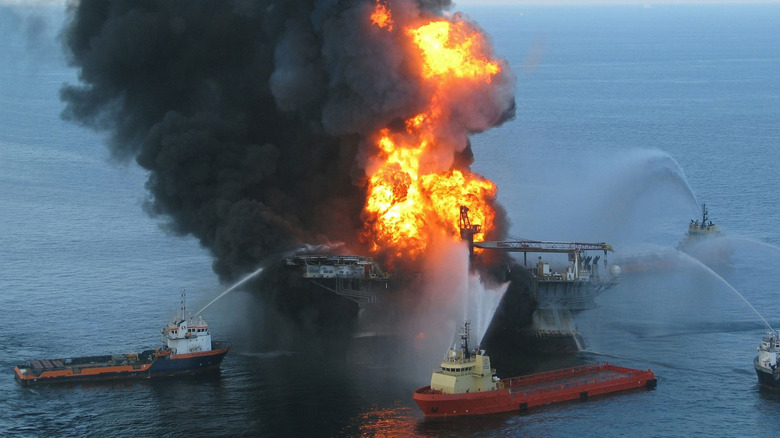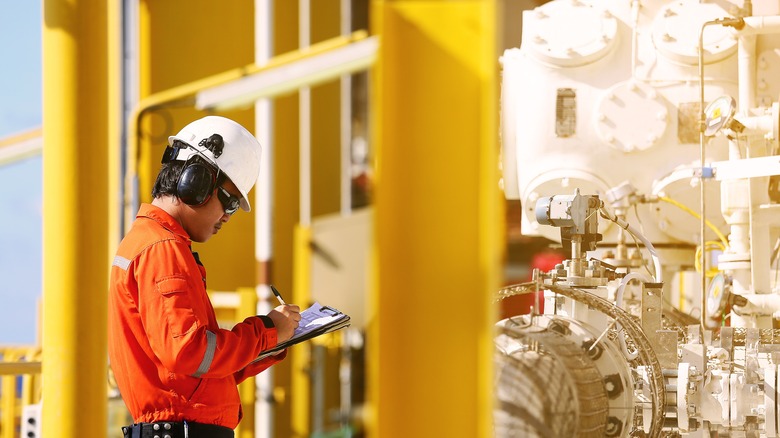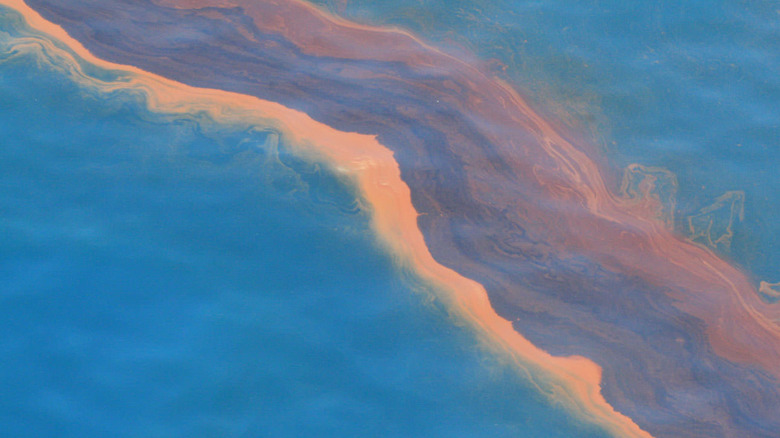How Did The Deepwater Horizon Explosion Happen And How Was The Oil Leak Stopped?
One of the worst environmental catastrophes in American history occurred on April 20, 2010, when the Deepwater Horizon oil rig exploded. Operating in the Macondo Prospect, a deep-sea oil reservoir almost a mile below the ocean's surface, the floating offshore oil rig was leased by BP and was situated about 41 miles off the coast of Louisiana. An estimated 4.9 million barrels of oil leaked into the Gulf of Mexico during the 87-day spill, with the incident claiming the lives of 11 workers and injuring 17.
But the seeds of the disaster were sown well before the explosion. On the 8th of April, engineers noticed unexpected pressure abnormalities while circulating drilling fluids, early indications of well instability. Then on April 19, during cementing operations, BP opted for a faster, more cost-effective design with fewer centralizers than advised, a risky decision that jeopardized the cement's ability to create a trustworthy seal. Internal tests conducted by Halliburton even indicated that this design might not work, but nothing was done about it.
To make sure the well wouldn't leak, the crew tested the seal's integrity using a negative pressure test on the morning of April 20. The findings, which displayed erratic pressure readings, were unclear. Supervisors, however, decided the test was successful and continued. Much lighter seawater was then used to fill the well in place of the heavy drilling mud, which controlled the well's pressure. These errors would turn out to be deadly, as the seal failed and created an opportunity for high-pressure hydrocarbons to rise up the wellbore.
Failures and warnings ignored
On April 20th, everything began to unfold when gas and drilling mud quickly surged up the wellbore and onto the rig floor, triggering an explosion. The alarms went off too late. The Deepwater Horizon caught fire in a matter of seconds. This was the result of a series of poor decisions and technical blunders that led to the explosion aboard Deepwater Horizon rather than one single mistake. The blowout preventer (BOP), a vital safety mechanism designed to seal the well, and those who operated it were fundamentally responsible for the catastrophe.
The BOP, which is the last line of defense, couldn't close the well in time. When the blowout occurred, this giant stack of hydraulic valves that was supposed to cut the drill pipe and seal the well failed. Later, investigators found that the device didn't work when it needed to because the drill pipe was out of alignment, the hydraulic system wasn't working right, and the batteries in important control systems were dead. The Chemical Engineer says that it only took a few minutes for a situation that could have been fixed to turn into a disaster that couldn't be avoided.
It became evident in the days that followed that BP and its contractors had neglected to prepare for the potential of a BOP failure in addition to ignoring early warnings. An already unstable situation became lethal due to poor communication, cost-cutting measures, and a lack of a safety culture. With no immediate solution, the United States was now dealing with a serious environmental crisis.
How the leak was stopped
As one of the biggest oil spills in history, it was no easy task to stop the leak. Since the damaged wellhead was located almost 5,000 feet below the surface, conventional repair techniques could not reach it. Engineers experimented with several strategies over almost three months, each of which had its share of technical challenges. A huge containment dome was deployed in an early attempt, but it was soon unsuccessful because methane hydrate crystals clogged the system.
Success eventually resulted from a number of interventions. A device called the "Top Hat" was put in place to reduce but not completely stop the flow of oil by siphoning some of it to surface ships. Additionally unsuccessful was a "junk shot," which involved injecting debris to block the well. The "static kill" method, which involved pumping a lot of drilling mud into the well and then sealing it with cement, was the final solution. The flow was finally stopped from below by drilling a second relief well next to the first, allowing them to divert the flow to seal the well.
On July 15, 2010, 87 days after the initial explosion, the Deepwater Horizon spill came to an end. Even though the well was sealed, the catastrophic effects on the environment and regulations would persist for a long time. It reaffirmed the risks of deep-sea extraction, led to significant changes in offshore drilling procedures, and served as a stark reminder of the high price of sacrificing safety in the name of energy.


